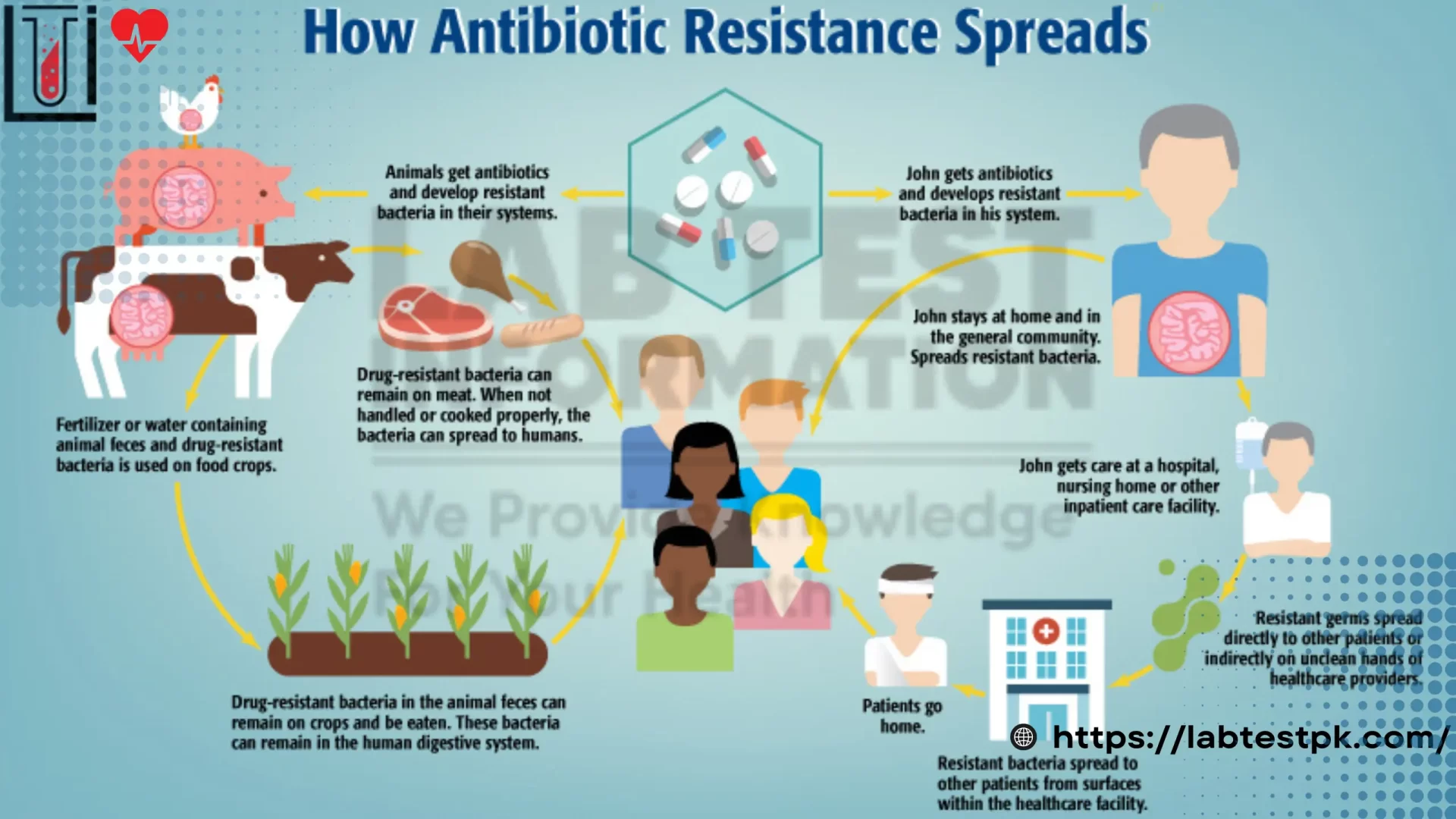Antibiotic Resistance
Antibiotic Resistance means when an antibiotic drug on medicines does not work against infection in the body and worsens over time. or the types of bacteria that come from the environment, and they are already exposed to a particular antibiotic in other human body. Sometimes this antibiotic resistance is against a Particular antibiotic, sometimes it is against Some antibiotics and sometimes it can be against
all antibiotics.
Causes of Antibiotic Resistance:
- Use of Antibiotics in incomplete doses.
- Using antibiotics without a doctor’s advice.
- Excessive use of antibiotics even when they are not needed.
- Use of antibiotics in animals whose Products are consumed by humans.
- Changing the DNA of bacteria in its structure against antibiotics.
- A bacterial infection is transmitted from Person who is already infected with antibiotic resistance.
Diagnosis of Antibiotic Resistance:
- Culture and Sensitivity Test.
- Rapid Tests for Specific Infections that Recurrent.
Types of Antibiotic Resistance:
They have 4 Categories of antibiotic Resistance:
- Inactivating drug
- Limiting uptake of drug
- Modifying drug target
- Active ding efflux


[…] Bone marrow trephine biopsy(b) Liver biopsy(d) Serum ferritin ✓(d) Serum LDH levels(e) Total iron binding […]
I cling on to listening to the newscast lecture about getting free online grant applications so I have been looking around for the most excellent site to get one. Could you advise me please, where could i acquire some?
[…] Ristocetin is an antibiotic that induces platelet aggregation by causing it to bind to von Willebrand factor, a protein […]
[…] Tests: These are the most common and can detect recent drug use within a few days to a few weeks, depending on the […]